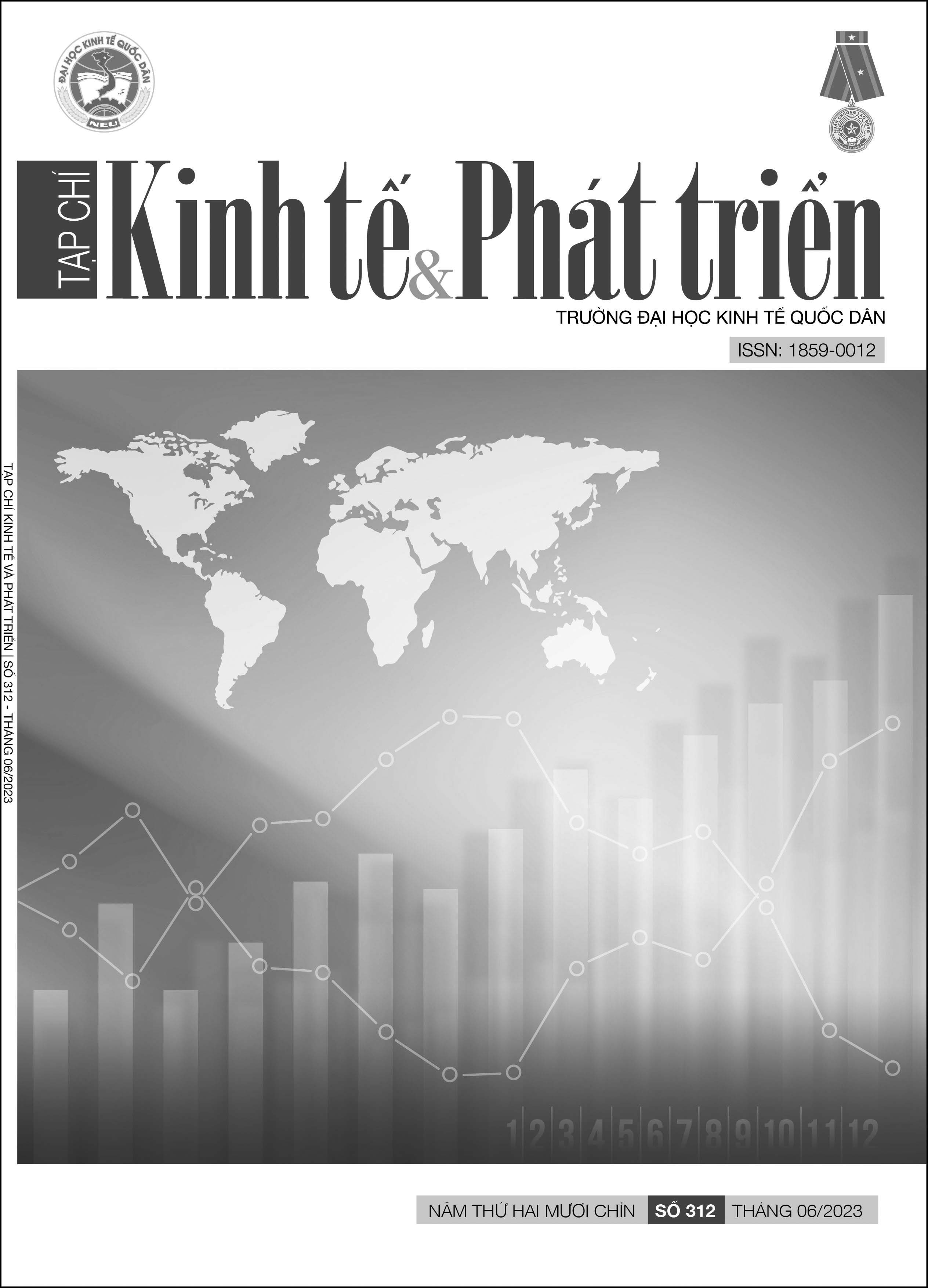Tài nguyên dư thừa và khả năng tham gia xuất khẩu của các doanh nghiệp ở Việt Nam
DOI:
https://doi.org/10.33301/JED.VI.1125Từ khóa:
Tài nguyên dư thừa, dư thừa tài chính, dư thừa nhân lực, xuất khẩuTóm tắt
Bài viết nghiên cứu tác động của tài nguyên dư thừa đến khả năng tham gia xuất khẩu của các doanh nghiệp. Nghiên cứu sử dụng mô hình xác suất tuyến tính (LPM) với dữ liệu chéo gộp của 346.135 doanh nghiệp hoạt động tại Việt Nam từ năm 2015 đến năm 2019. Kết quả ước lượng cho thấy dư thừa tài chính có hiệu ứng hình chữ U trong khi dư thừa nhân lực có ảnh hưởng không ổn định đến khả năng tham gia hoạt động xuất khẩu của doanh nghiệp. Nghiên cứu cung cấp một sự hiểu biết sâu hơn về những ảnh hưởng của các loại tài nguyên dư thừa đến chiến lược xuất khẩu của doanh nghiệp. Kết quả nghiên cứu cũng có ý nghĩa thực tiễn đối với các nhà quản lý trong các doanh nghiệp, gợi ý rằng các nhà quản lý cần phân biệt được các loại nguồn lực dư thừa sẵn có và ảnh hưởng của chúng đến hoạt động xuất khẩu để có chính sách quản lý nguồn lực dư thừa phù hợp với chiến lược xuất khẩu của doanh nghiệp.
Tài liệu tham khảo
Bourgeois, L.J. (1981), ‘On the Measurement of Organizational Slack’, Academy of Management Review, 6(1), 29–39.
Bourgeois, L.J. & Singh, J.V. (1983), ‘Organizational Slack and Political Behavior Among Top Management Teams’, Academy of Management Proceedings, 1983(1), 43-47.
Bromiley, P. (1991), ‘Testing a causal model of corporate risk-taking and performance’, Academy of Management Journal, 34, 37–59.
Cyert, R.M., & March, J.G. (1963), A behavioral theory of the firm, Prentice Hall.
Daniel, F., Lohrke, F.T., Fornaciari, C.J. & Turner, R.A. (2004), ‘Slack resources and firm performance: A meta-analysis’, Journal of Business Research, 57(6), 565–574.
George, G. (2005), ‘Slack resources and the performance of privately held firms’, Academy of Management Journal, 48(4), 661–676.
Hitt, M.A., Hoskisson, R.E. & Kim, H. (1997), ‘International diversification: Effects on innovation and firm performance in product-diversified firms’, Academy of Management Journal, 40(4), 767–798.
Kim, B., Lee, N., Wi, J. & Lee, J. (2017), ‘The effects of slack resources on firm performance and innovation in the Korean pharmaceutical industry’, Asian Journal of Technology Innovation, 25(3), 387–406.
Kim, H., Lee, P.M., & Kim, H. (2008), ‘Ownership structure and the relationship between financial slack and R&D investments: Evidence from Korean firms’, Organization Science, 19(3), 404–418.
Kiss, A.N., McDougall-Covin, P.P. & Fernhaber, S. A. (2017), ‘Slack, Innovation, and Export Intensity Implications for Small- and MediumSized Enterprises’, Entrepreneurship: Theory and Practice, 42(5). DOI: https://doi.org/10.1177/1042258718795318.
Lin, W.-T., Cheng, K.-Y. & Liu, Y. (2009), ‘Organizational slack and firm‘s internationalization: A longitudinal study of high-technology firms’, Journal of World Business, 44, 397–406.
Mishina, Y., Pollock, T., & Porac, J. (2004), ‘Are more resources always better for growth? Resource stickiness in market and product expansion’, Strategic Management Journal, 25(12), 1179–1197. DOI: https://onlinelibrary.wiley.com/doi/abs/10.1002/smj.424.
Nohria, N. & Gulati, R. (1996), ‘Is slack good or bad for innovation?’, Academy of Management Journal, 39(5), 1245–1264.
Paeleman, I., Fuss, C. & Vanacker, T. (2017), ‘Untangling the multiple effects of slack resources on firms’ exporting behavior’, Journal of World Business, 52(6), 769–781.
Reid, S.D. (1981), ‘The Decision-Maker and Export Entry and Expansion’, Journal of International Business Studies, 12(2), 101–112.
Sharfman, M.P., Wolf, G., Chase, R.B. & Tansik, D.A. (1988), ‘Antecedents of organizational slack’, Academy of Management Review, 13, 601–614.
Singh, J. (1986), ‘Performance, slack, and risk taking in organizational decision making’, Academy of Management Journal, 29, 562–585.
Tan, J. & Peng, M.K. (2003), ‘Organizational slack and firm performance during economic transitions: two studies from an emerging economy’, Strategic Management Journal, 24, 1249–1263.
Nguyễn Thị Kim Trúc, Nguyễn Thị Thu Vui, Nguyễn Thị Thùy Dung & Đoàn Ngọc Thắng (2020), ‘Tác động của tài nguyên dư thừa tới xuất khẩu của doanh nghiệp vừa và nhỏ ở Việt Nam’, Tạp chí Kinh tế và Phát triển, 279, 48-57.
Tseng, C.H., Tansuhaj, P., Hallagan, W. & McCullough, J. (2007), ‘Effects of firm resources on growth in multinationality’, Journal of International Business Studies, 38, 961–974.
Wefald, A.J., Katz, J.P., Downey, R.G. & Rust, K.G. (2010), ‘Organizational Slack, Firm Performance, and the Role of Industry’, Journal of Managerial Issues, 22(1), 70–87.
Wooldridge, J.M. (2019), Introductory Econometrics: A Modern Approach (5th ed.), South-Western Cengage Learning, Mason, Ohio.
Zhong, H. (2014), ‘Slack resources and the performance of information technology firms’, WIT Transactions on Information and Communication Technologies, 61, 1595–1602.





